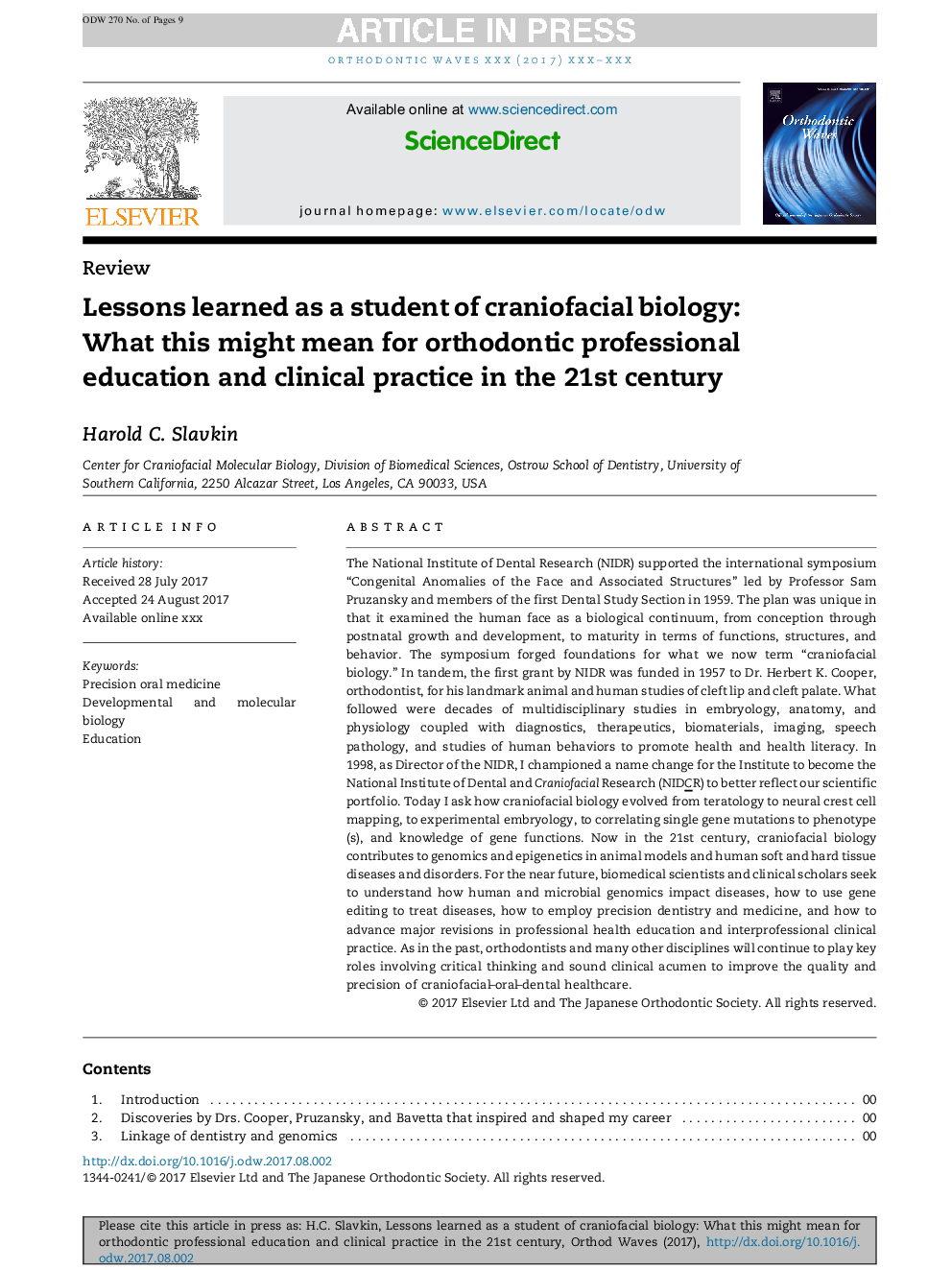| کد مقاله | کد نشریه | سال انتشار | مقاله انگلیسی | نسخه تمام متن |
|---|---|---|---|---|
| 8707972 | 1586382 | 2018 | 9 صفحه PDF | دانلود رایگان |
عنوان انگلیسی مقاله ISI
Lessons learned as a student of craniofacial biology: What this might mean for orthodontic professional education and clinical practice in the 21st century
ترجمه فارسی عنوان
درسهایی که به عنوان دانشآموز زیستشناسی مغناطیسی یاد گرفته می شود: چه چیزی ممکن است برای آموزش حرفه ای ارتودنسی و عمل بالینی در قرن 21
دانلود مقاله + سفارش ترجمه
دانلود مقاله ISI انگلیسی
رایگان برای ایرانیان
کلمات کلیدی
داروهای دقیق دهان، زیست شناسی توسعه و مولکولی، تحصیلات،
موضوعات مرتبط
علوم پزشکی و سلامت
پزشکی و دندانپزشکی
دندانپزشکی، جراحی دهان و پزشکی
چکیده انگلیسی
The National Institute of Dental Research (NIDR) supported the international symposium “Congenital Anomalies of the Face and Associated Structures” led by Professor Sam Pruzansky and members of the first Dental Study Section in 1959. The plan was unique in that it examined the human face as a biological continuum, from conception through postnatal growth and development, to maturity in terms of functions, structures, and behavior. The symposium forged foundations for what we now term “craniofacial biology.” In tandem, the first grant by NIDR was funded in 1957 to Dr. Herbert K. Cooper, orthodontist, for his landmark animal and human studies of cleft lip and cleft palate. What followed were decades of multidisciplinary studies in embryology, anatomy, and physiology coupled with diagnostics, therapeutics, biomaterials, imaging, speech pathology, and studies of human behaviors to promote health and health literacy. In 1998, as Director of the NIDR, I championed a name change for the Institute to become the National Institute of Dental and Craniofacial Research (NIDCR) to better reflect our scientific portfolio. Today I ask how craniofacial biology evolved from teratology to neural crest cell mapping, to experimental embryology, to correlating single gene mutations to phenotype(s), and knowledge of gene functions. Now in the 21st century, craniofacial biology contributes to genomics and epigenetics in animal models and human soft and hard tissue diseases and disorders. For the near future, biomedical scientists and clinical scholars seek to understand how human and microbial genomics impact diseases, how to use gene editing to treat diseases, how to employ precision dentistry and medicine, and how to advance major revisions in professional health education and interprofessional clinical practice. As in the past, orthodontists and many other disciplines will continue to play key roles involving critical thinking and sound clinical acumen to improve the quality and precision of craniofacial-oral-dental healthcare.
ناشر
Database: Elsevier - ScienceDirect (ساینس دایرکت)
Journal: Orthodontic Waves - Volume 77, Issue 1, March 2018, Pages 1-9
Journal: Orthodontic Waves - Volume 77, Issue 1, March 2018, Pages 1-9
نویسندگان
Harold C. Slavkin,
